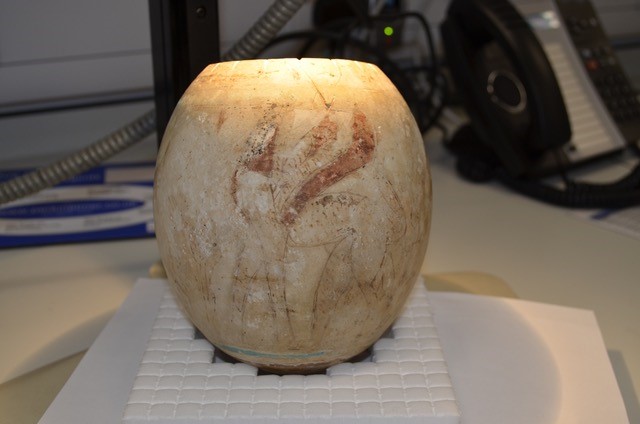Highly-prized ornate ostrich eggs found in Europe, the Middle East and north Africa suggest the ancient world was more connected than previously thought, according to research.
The findings, published in the journal Antiquity, are based on state-of-the-art scanning technology that allowed researchers to pinpoint the complex origin and history of the luxury items by examining their chemical make-up.
While decorated ostrich eggs were highly sought after by the elites of Mediterranean civilisations during the bronze (2,500 BC to 1,200 BC) and iron ages (1,200 BC to 600 BC), little has been known about the ancient trade and production of these luxury goods.
They also examined egg fragments found across 11 sites in Europe, the Middle East and north Africa.
Using electron microscopy scanning, the researchers were able to distinguish eggs laid in different climatic zones.
The team were able gain a more comprehensive understanding of how ancient ostrich eggs during that time were sourced.
They were also able to determine the techniques that were used by the artisans such as polishing, smooth scraping, picking and shaving to decorate the shells with motifs of animals, flora, geometric patterns, soldiers and chariots.
Dr Tamar Hodos, a reader in Mediterranean archaeology at University of Bristol’s School of Arts, said: “The entire system of decorated ostrich egg production was much more complicated than we had imagined.

“Mediterranean ostriches were indigenous to the eastern Mediterranean and north Africa.”
She continued: “What was most surprising to us was that eggs from both zones were found at sites in the other zone, suggestive of more extensive trade routes.”
The researchers believe eggs were taken from wild birds’ nests – at considerable risk – despite evidence of ostriches being kept in captivity during this period.
Dr Hodos added: “We also found eggs require time to dry before the shell can be carved and therefore require safe storage.
“This has economic implications, since storage necessitates a long-term investment and this, combined with the risk involved, would add to an egg’s luxury value.”
The study is part of an ongoing research project into ancient luxury goods called Globalising Luxuries.






